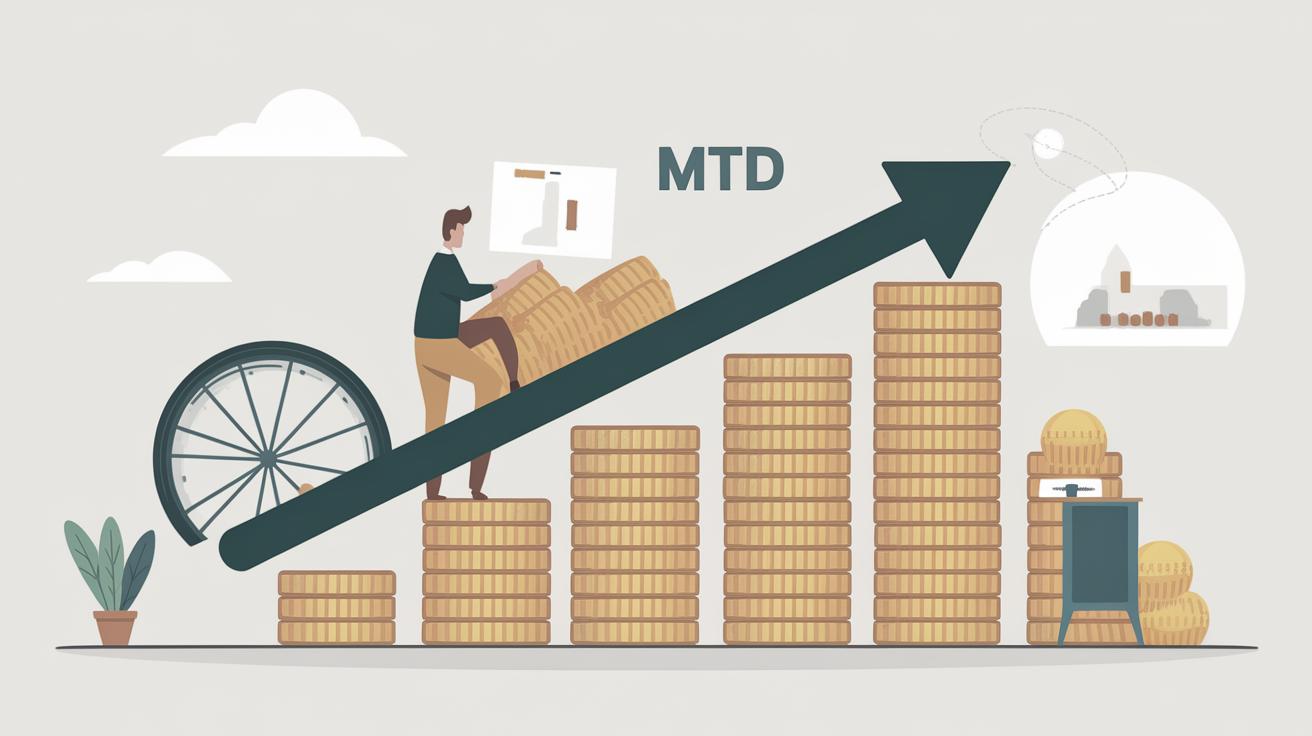Making Tax Digital for Income Tax
The Making Tax Digital (MTD) initiative represents a significant change in the UK tax system, moving taxpayers from traditional paper-based methods to a streamlined, digital approach. This blog post provides comprehensive insights into MTD for Income Tax, addressing key questions, eligibility, requirements, exemptions, and the digital tools required to comply with the new system. As MTD implementation rolls out, it is essential for individuals, businesses, and accountants to stay informed about the phases and technicalities of this digital transformation. Through this guide, we aim to demystify MTD, helping taxpayers transition smoothly, avoiding penalties, and optimizing their tax processes in this new digital era.
Making Tax Digital for Income Tax – Frequently Asked Questions
FAQ topics
MTD for Income Tax has prompted numerous questions among taxpayers and accounting professionals. Frequently asked questions typically revolve around eligibility, compliance requirements, and the specific timelines for the transition to digital tax submission. Taxpayers are eager to understand not only the basic requirements but also the nuances of the new system, including the technology they need to adopt and their role in maintaining digital records.
The FAQ section serves as a resource to address these queries effectively, providing clarity and guidance. From understanding who needs to comply and by when, to the practicalities of using the software, each question is tackled with detailed explanations aimed at demystifying the process. The goal is to empower taxpayers with the knowledge needed to navigate MTD confidently.
General questions
The launch of MTD raises various general questions, particularly concerning the overall rationale and objectives behind this digital transition. It marks a considerable shift in tax administration, emphasizing efficiency, accuracy, and lessening the tax gap. As part of a broader plan to modernize the UK tax system, MTD is designed to harness technology, making it easier for taxpayers to get their tax right.
Another common question addresses how MTD changes the interaction between taxpayers and HMRC. With MTD, the frequency and nature of submissions have evolved, and understanding these new dynamics is crucial for compliance. MTD is not just about tax; it’s about digital preparedness for the future taxpayer, in which digital competence supports better financial management.
Who’s in and when?
Determining who needs to comply with MTD and when is central to understanding its implementation. Initially targeting businesses with an annual turnover above the VAT threshold, the scope of MTD is widening to include a broader range of taxpayers. By April 2026, it will extend to all landlords and self-employed individuals with an annual income above £50,000, with plans for further rollout to smaller incomes thereafter.
Knowing the deadlines is pivotal for affected taxpayers, ensuring necessary systems and processes are in place to meet compliance requirements. Understanding eligibility, registration timelines, and the phased approach to MTD adoption helps in preparing effectively for the transition.
Who doesn’t MTD apply to (yet)?
While MTD is expansive, certain individuals and businesses are not yet required to transition to this new system. For now, those with income levels beneath the initial threshold, or those exempt for other specific reasons, are not immediately affected. These groups have continued to submit returns using traditional methods for the time being.
This phased approach ensures accommodations for smaller businesses and individuals who may require more time to adapt. Future updates from HMRC will provide additional information on when these groups might need to begin the switch, but they offer valuable preparation time.
What exemptions and deferrals are available?
HMRC has criteria for exemptions and deferrals, recognizing that certain circumstances may warrant more time or exclusion from the new protocols. Exemptions focus on those for whom digital interaction is impractical, whether due to remoteness, disability, or religious reasons.
Additionally, transitional arrangements and deferrals are available for more complex cases or businesses facing significant transition challenges. Applying for an exemption or deferral requires substantiation and approval by HMRC, ensuring only those genuinely eligible receive these concessions.
Joining MTD
The process of joining MTD involves registration with HMRC, often completed through the approved digital software. This transition away from traditional methods requires users to embrace technology and automated systems fully.
Joining MTD also means understanding your obligations for record-keeping and submissions through this new framework. Knowing the steps involved ensures preparedness to maintain compliance and take advantage of the benefits MTD offers, such as streamlined tax processes and improved accuracy.
Leaving MTD
Under specific circumstances, businesses or individuals may leave MTD. Situations where income falls below the stipulated threshold or upon successful application for an exemption can result in withdrawal from MTD requirements.
Understanding the exit process, including its documentation and implications, ensures that businesses can smoothly transition back, ensuring no disruption to their compliance or accounting practices if circumstances necessitate leaving MTD.
MTD requirements: Digital record keeping
Compliance with MTD mandates adopting digital record-keeping, moving away from paper storage to secure cloud-based solutions. This shift not only promotes efficiency but also ensures stability and accessibility in financial reporting.
Businesses need to select suitable software that integrates adequately with HMRC systems. These tools must capture and store financial data accurately, allowing seamless retrieval and submission when required, forming an integral part of the MTD ecosystem.
MTD requirements: Quarterly updates
MTD requires quarterly updates to HMRC, a distinct change from the annual submissions previously familiar to taxpayers. These updates provide real-time financial data, reducing inaccuracies and promoting timely financial accountability.
Ensuring regular, proactive submissions requires disciplined record-keeping and proficient use of digital platforms. The benefits of this approach include more predictable cash flow and improved record management, pivotal for effective financial planning.
MTD requirements: End of year submission
Aside from quarterly updates, MTD encompasses an end-of-year submission component. This step consolidates yearly transactions and aligns them with the information previously submitted, ensuring holistic and accurate tax reporting.
Completing end-of-year submissions necessitates consistent data management and reconciliation practices. Accuracy is paramount, calling for a synchronized effort between the digital tools employed and the taxpayer’s financial tracking methods.
MTD requirements: Digital links
The MTD framework emphasizes the importance of digital links, ensuring data flows seamlessly from initial entry points to submission. Digital links facilitate accuracy, reduce human error, and simplify compliance.
Taxpayers must ensure their software solutions support effective digital links, resulting in an integrated system where data moves fluidly between business records and HMRC interfaces, reflecting MTD’s emphasis on technological proficiency.
Simplification options
To ease the transition, HMRC offers simplification options for small businesses and landlords. These options aim to balance compliance demands with the operational capacity of smaller entities, minimizing the administrative burden.
These pathways provide alternative methods for reporting and calculate, considering the unique challenges faced by smaller taxpayers. Utilizing these options effectively requires a thorough understanding of available choices and their respective merits.
Joint property owners
Joint property ownership presents particular challenges under MTD. Proper coordination is needed to ensure that income is correctly reported and split between owners. It’s vital to agree upon a consistent approach to record and present this financial data.
MTD guidelines provide specific instructions for such arrangements, ensuring compliance while recognizing the complexities involved in managing shared financial responsibilities. Proactive communication and digital readiness remain key for these property owners.
Software
Choosing the right software is crucial for MTD compliance. Approved software must meet HMRC’s standards, offering secure, accurate, and efficient solutions for record-keeping and submission requirements.
Taxpayers are encouraged to research and invest in software that not only integrates smoothly with existing systems but also provides user-friendly interfaces and appropriate support functionalities, enabling them to focus on their core business processes.
Registering for MTD
Registration for MTD marks the formal start of digital tax compliance. This straightforward process involves confirming eligibility, selecting the appropriate software, and notifying HMRC of the transition.
Timely registration ensures compliance with upcoming deadlines and opens avenues for familiarization with new systems. Early registrants not only gain compliance certainty but also leverage the benefits of digital tax administration early.
Penalties
Non-compliance with MTD can lead to penalties, ranging from fines to increased scrutiny from HMRC. Awareness of these penalties drives adherence to MTD’s requirements, safeguarding against potential financial setbacks.
Understanding the regulations minimizes risks and encourages best practices in digital tax management, emphasizing proactive engagement with the new tax framework to avoid punitive measures.
Testing
Before full implementation, taxpayers have opportunities to test MTD processes, gaining familiarity with software and submission methods. This testing phase is crucial, allowing users to troubleshoot and optimize systems ahead of time.
Such preparatory steps are integral to a smooth transition, ensuring taxpayers are well-versed in MTD requirements and can seamlessly incorporate them into their standard operating procedures once officially required.
Tax agents & accountants
The role of tax agents and accountants is fundamental in helping clients transition to and maintain compliance with MTD. Their expertise in digital record-keeping, technology adoption, and compliance ensures a smooth transition.
Engaging with professionals familiar with MTD not only streamlines the adaptation but also mitigates risks associated with incomplete understanding of the requirements, fostering a compliant, future-ready financial management strategy.
Further information
Given the evolving nature of MTD, accessing up-to-date, reliable information is essential. HMRC’s website remains a primary resource, offering comprehensive guidance and updates as the initiative grows.
Additional resources, including webinars, forums, and professional tax associations, provide platforms for continued learning and discussion, ensuring taxpayers remain informed and prepared for future compliance challenges and changes.
Final thoughts
| Topic | Explanation |
|---|---|
| Who’s in and when? | Details on eligibility and timeline for MTD adoption. |
| Who doesn’t MTD apply to (yet)? | Information on groups not currently required to comply with MTD. |
| Exemptions and deferrals | Overview of circumstances allowing for exclusions or delays. |
| MTD requirements | Comprehensive requirements for digital record-keeping and submissions. |
| Software | Choosing the appropriate software to comply with MTD standards. |
| Penalties | Potential penalties for non-compliance and adherence strategies. |
| Further information | Resources and guidance for ongoing MTD compliance and updates. |


